Are lab grown diamonds eco-friendly?
Key Takeaway:
- Lab-grown diamonds offer a more sustainable alternative to mined diamonds, with a lower environmental impact and fewer social and economic externalities.
- Compared to mined diamonds, lab-grown diamonds have a reduced carbon footprint and minimized water usage, making them a more eco-friendly choice.
- Consumers’ awareness and education play a crucial role in promoting sustainability, and considering alternative choices like lab-grown diamonds can contribute to a more sustainable and responsible jewelry industry.
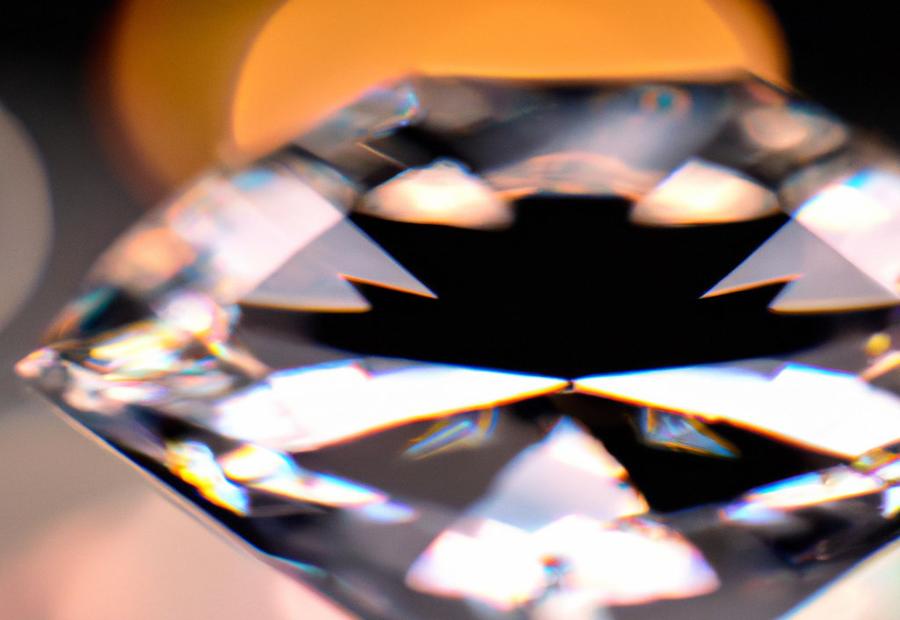
Photo Credits: Www.Lab-Grown-Diamond-Earrings.Com by Joseph Williams
Lab grown diamonds, also known as synthetic diamonds, are a hot topic when it comes to eco-friendliness. These diamonds are created in a lab and are not different from natural diamonds. To make them, scientists replicate the conditions in the Earth’s mantle. This means that mining for natural diamonds is not necessary.
When looking at lab grown diamonds’ eco-friendliness, one must consider environmental factors. Mining natural diamonds often causes ecological damage, like habitat destruction and water pollution. On the other hand, producing lab grown diamonds uses less land and water, making a smaller environmental footprint.
Furthermore, lab grown diamonds can reduce demand for natural diamonds. This reduces the negative impacts on local communities and workers, as well as conflict and exploitation.
Also, lab grown diamonds are a sustainable option for consumers who care about the environment. By choosing them, people can support a more responsible diamond industry while enjoying the beauty of these gemstones.
Lab-grown diamonds

Photo Credits: Www.Lab-Grown-Diamond-Earrings.Com by Scott Rodriguez
Lab-grown diamonds offer a fascinating alternative to their mined counterparts. In this section, we will delve into the world of lab-grown diamonds and explore their physical properties, environmental impact, and sustainability practices. Uncover the unique characteristics of these diamonds, learn about the environmental implications of their creation, and discover how the industry is adopting sustainable practices. Join us as we navigate through the realm of lab-grown diamonds and uncover their eco-friendly potential.
Physical properties
Lab-grown diamonds have special properties that differ from mined ones. These include:
- Hardness (10 on the Mohs scale – very durable and scratch-resistant)
- Refractive index (similar to natural diamonds)
- Thermal conductivity (high)
A table can illustrate these physical features:
| Physical Property | Lab-Grown Diamonds |
|---|---|
| Hardness | 10 |
| Refractive Index | Similar to Natural Diamonds |
| Thermal Conductivity | High |
Lab-grown diamonds also show great color purity and clarity because of the controlled environment in which they grow. This allows for more customization and choice when picking a lab-grown diamond.
In conclusion, the physical properties of lab-grown diamonds are very similar to natural diamonds, making them hard to tell apart. These qualities make them an attractive option for those looking for sustainable and ethical diamonds.
Environmental impact
Lab-grown diamonds have been gaining much attention lately. They are created in labs with advanced technology, meaning there is no need to use environmentally destructive mining practices. This makes them a more sustainable option which is why they are gaining popularity. Lab-grown diamonds are an alternative to mined diamonds and they have a positive environmental impact.
Sustainability practices
Lab-grown diamonds are a sustainable choice, with multiple practices in place to minimize environmental impact. These include:
- Using less energy and water
- Reducing diamond mining
- Recycling materials
- Cutting back on greenhouse gas emissions
Furthermore, many lab-grown diamond manufacturers source renewable energy and minimize waste to reach sustainability goals. This contributes to a more responsible industry.
Sustainability practices are not only about the environment – they also cover social and economic aspects. When choosing between lab-grown and mined diamonds, consider the sustainability practices involved. Research the sourcing and manufacturing processes for transparency.
Mined diamonds and their environmental impact

Photo Credits: Www.Lab-Grown-Diamond-Earrings.Com by Nathan Miller
Mined diamonds have a significant environmental impact, affecting the environment, society, and the economy. From the environmental impact to the social and economic consequences, we will explore the various dimensions of the negative effects caused by the mining of diamonds.
Environmental impact
Lab-grown diamonds: because eco-friendly bling is the new black! Their production process has much less environmental impact than mined diamonds. Benefits include:
- No land disturbance.
- Lower energy consumption and carbon emissions.
- Little water usage.
- No chemicals released into water sources.
- Less waste material.
However, their overall sustainability must be considered. Such as the energy source used in synthesis and disposal of equipment.
Social impact
Lab-grown diamonds have a much lower social effect than mined diamonds. Mining often happens in developing countries, with unsafe working conditions and exploited workers. Whereas in lab-grown diamond production, conditions are controlled and wages are fair.
Mined diamonds can be linked to human rights abuses and conflicts in certain regions, known as blood or conflict diamonds. Lab-grown diamonds do not have this issue.
Plus, lab-grown diamonds create new job opportunities in diamond synthesis. This can help communities by diversifying their economies and giving people stable jobs.
By choosing lab-grown diamonds instead of mined ones, consumers can back socially responsible practices in the diamond industry. The environmental impact of diamonds may be high, but their economic impact is even higher. Can lab-grown diamonds strike the ideal balance?
Economic impact
Lab-grown diamonds have a big economic effect on the diamond world. These man-made gems give an alternative to natural mined diamonds, giving consumers more options and making competition more fierce. As lab-grown diamonds are usually cheaper than their natural counterparts, they could change the traditional diamond supply chain and pricing.
The economic effect of lab-grown diamonds is more than just their price. With improvements in tech, making lab-grown diamonds is becoming more economical and efficient. This might lead to more job openings in this growing sector, as well as possible investments in research and development.
Also, the introduction of lab-grown diamonds has made some diamond mining companies invest in synthetic diamond production. This diversifying of their business models lets these companies adapt to changing consumer likes and helps them stay relevant in the industry.
For stakeholders to get the full economic benefits of lab-grown diamonds, they need to accept this emerging market. Governments can help by making regulations and incentives that support investment and growth. Additionally, education and awareness campaigns can help buyers make educated decisions when buying diamonds, so both natural and lab-grown can coexist peacefully.
Overall, the economic influence of lab-grown diamonds is huge. It not only gives buyers more affordable options but also presents new possibilities for job creation and innovation in the diamond industry. By embracing this growing market, stakeholders can make the most of the economic benefits while advertising sustainability practices in both natural and lab-grown diamond areas.
Sustainability of lab-grown diamonds
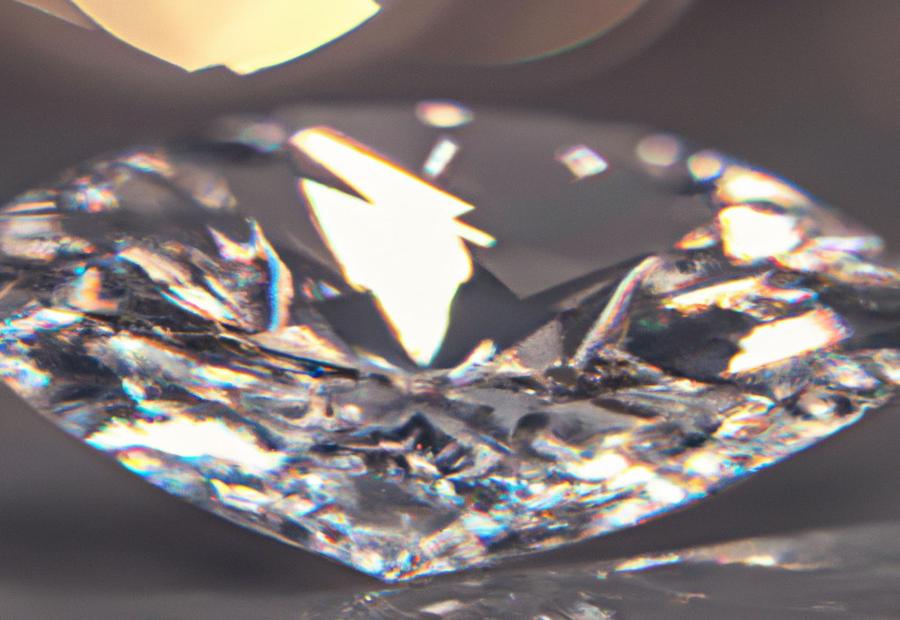
Photo Credits: Www.Lab-Grown-Diamond-Earrings.Com by Joe Williams
Lab-grown diamonds have gained popularity, but what about their sustainability? In this section, we will delve into the sustainability of lab-grown diamonds, covering environmental, social, and economic aspects. From their carbon footprint to ethical considerations, and economic impact, we will explore the various dimensions that determine the sustainability of these man-made gems.
Environmental sustainability
Regarding environmental sustainability, lab-grown diamonds must be considered. They’re made in a lab with advanced technology and techniques. This means no diamond mining, which can cause habitat destruction, erosion, and water pollution.
The production of lab-grown diamonds avoids the need for heavy machinery and large-scale excavation. The energy consumed in creating them is generally lower than mined diamonds.
Plus, lab-grown diamonds can be produced with renewable energy sources. This reduces carbon emissions and minimizes their effect on climate change.
Social sustainability
Lab-grown diamonds can have a positive social sustainability impact! They provide jobs in manufacturing and distribution. These diamonds offer greater transparency about their origin, helping to foster fair trade and ethical sourcing. Lab-grown diamonds reduce the risk of human rights abuses and child labor associated with traditional diamond mining.
By supporting lab-grown diamonds, consumers can help create sustainable communities. They promote better working conditions and fair wages. Plus, the increased availability of lab-grown diamonds gives more people access to luxury goods without compromising social values.
Social sustainability is also about educating consumers. It empowers them to make informed decisions that align with their social values.
Economic sustainability
Lab-grown diamonds offer economic sustainability through various means. They have the potential to disrupt the traditional diamond industry, providing a more cost-effective alternative. Unlike mined diamonds, lab-grown ones can be produced in a controlled environment, resulting in lower production costs and more affordable prices. This opens up new markets and opportunities, allowing more people to enjoy diamond jewelry without breaking the bank.
Moreover, lab-grown diamonds also contribute to economic sustainability. They reduce reliance on mining practices which are often harmful to the environment. Traditional diamond mining has many risks – labor disputes, political instability, and ethical concerns. By opting for lab-grown diamonds, consumers can support an ethical and socially responsible industry, with fair working conditions.
Furthermore, the economic sustainability of lab-grown diamonds extends beyond consumer benefits. Technology advances and demand for these sustainable alternatives is growing. This creates job opportunities in the lab-grown diamond industry. It stimulates local economies and provides employment opportunities that align with sustainable practices.
Pros and cons of lab-grown diamonds
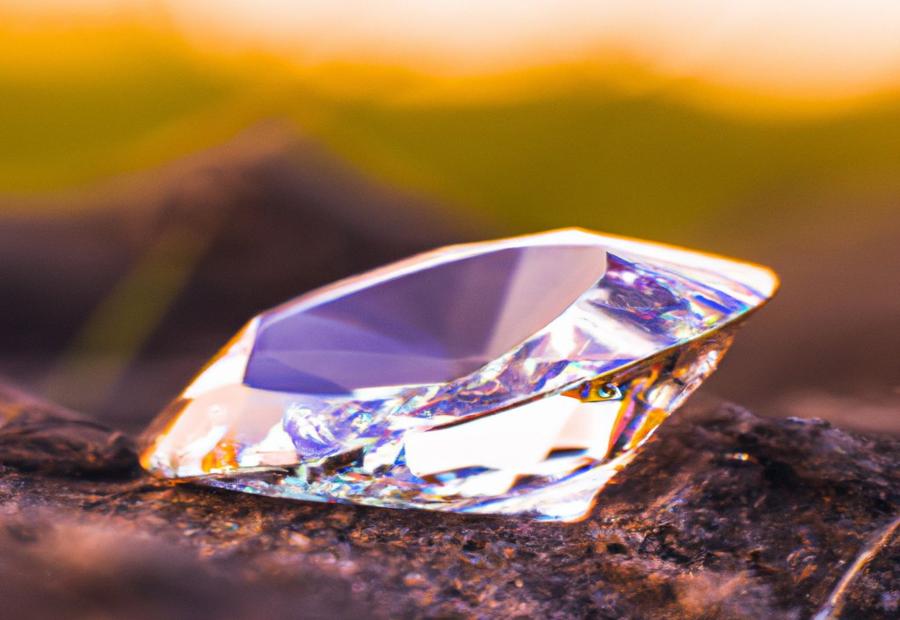
Photo Credits: Www.Lab-Grown-Diamond-Earrings.Com by Carl Wilson
Lab-grown diamonds have gained immense popularity in recent years, but are they truly eco-friendly? In this section, we will explore the pros and cons of lab-grown diamonds. Discover the benefits these diamonds offer, such as reduced environmental impact and ethical considerations. However, we will also acknowledge the drawbacks, including potential high energy consumption during the manufacturing process. Let’s dive into the fascinating world of lab-grown diamonds and weigh the advantages against the disadvantages.
Pros of lab-grown diamonds
Lab-grown diamonds boast plenty of appealing advantages! They have the same physical properties as natural diamonds, making them indistinguishable. Plus, lab-grown diamonds have a much lower environmental impact. And the sustainability practices associated with them are great.
These diamonds can be traced from production to market, making them ethically sourced. Plus, they’re more budget-friendly and offer customization options. By choosing lab-grown diamonds, consumers help reduce social issues like child labor and human rights abuses.
Lab-grown diamonds are also conflict-free, certified by the Kimberly Process Certification Scheme. All these benefits make lab-grown diamonds a popular choice for those who care about sustainability, ethics, and affordability. Get the beauty and luxury of diamonds while making a socially responsible decision.
However, lab-grown diamonds lack the sentimental value of a mined diamond and may be seen as artificial bling.
Cons of lab-grown diamonds
Lab-grown diamonds have a few cons worth noting. For one, they are of lower value than natural diamonds. Plus, many customers don’t know about them since they’re new to the market. This can make it tricky to resell them later. Moreover, they need loads of energy and resources for production, which can cause environmental problems. Aesthetically speaking, some people prefer the unique features and history of natural diamonds. Lastly, there’s the worry that if lab-growns get more popular, it could have a long-term effect on natural diamonds’ market.
But, not all shoppers factor in these things when getting diamonds. They also take into account personal preference, budget, and ethics.
Pro Tip: When looking at lab-grown or natural diamonds, consider more than just financial value and environmental impact. Research and think about your values and preferences. That way, you can make a decision that aligns with what you want and need.
It’s time to prove that sustainable can still be sparkly – let’s shine a light on lab-grown diamonds!
Consumer choice and sustainability
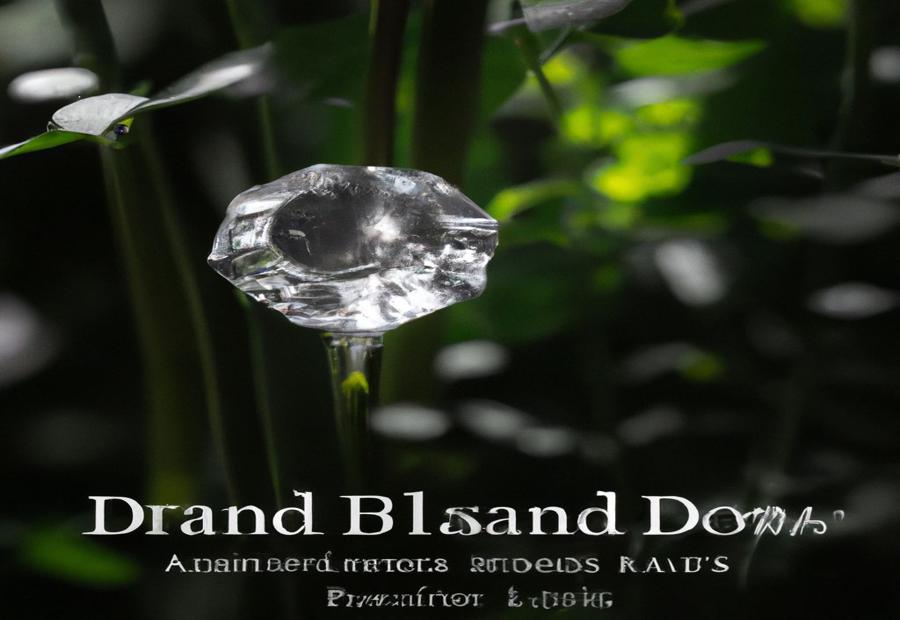
Photo Credits: Www.Lab-Grown-Diamond-Earrings.Com by Justin Baker
Consumer choice and sustainability play a significant role in the ongoing discussion surrounding lab-grown diamonds’ eco-friendliness. In this section, we will explore the importance of consumer awareness and education in making informed decisions. Additionally, we will delve into alternative choices available for those seeking more sustainable options, offering valuable insights into the potential environmental impact of different diamond alternatives.
Consumer awareness and education
Consumer awareness and education are essential for making informed choices when purchasing. People are becoming more aware of the importance of getting educated on sustainability. It is important to be informed about topics like lab-grown diamonds and their environmental and social impact. This allows people to make conscious decisions that go with their values.
When it comes to lab-grown diamonds and mined diamonds, one must understand the differences. Lab-grown diamonds appear identical to the natural ones, but they have a much lower environmental footprint. Also, producing them requires less energy and water compared to traditional diamond mining. By buying lab-grown diamonds, we can help reduce emissions and land disturbance caused by mining activities.
We must consider social and economic sustainability when selecting lab-grown diamonds. It offers ethical sourcing practices, avoiding potential human rights violations related to traditional mining. Supporting the growth of lab-grown diamond technology can also create more jobs in this sector.
It is like choosing between a guilt-free dessert or a regular one; both satisfy, but one is better for the environment. Education on consumer awareness and education helps people make choices that are right for them and good for sustainability.
Alternative choices
Lab-grown diamonds provide a sustainable and eco-friendly option. But, there are other choices for people who are conscious of the environmental impact of diamond mining. These alternatives can align with sustainability practices and ethical considerations.
For instance, recycled diamonds can be sourced from previously owned jewelry or other diamond products. By choosing recycled diamonds, people can reduce the demand for new diamond production and lessen the environmental impact from mining.
Synthetic gemstones are created in a lab using technology and chemical processes. They can offer similar aesthetics at a lower price. Plus, they don’t have the ethical concerns associated with mining.
Alternatively, people can consider other gemstones, such as moissanite, sapphires, or emeralds. These gemstones have their own unique properties and visual appeal. They are attractive options for those looking for sustainable and ethically-sourced choices.
In conclusion, while lab-grown diamonds are eco-friendly, other choices exist for people who prioritize sustainability and ethics. Recycled diamonds, synthetic gemstones, and other gemstones offer viable options that align with these values. Exploring these alternatives can help make informed decisions that contribute to a more sustainable and environmentally-conscious jewelry industry.
Conclusion
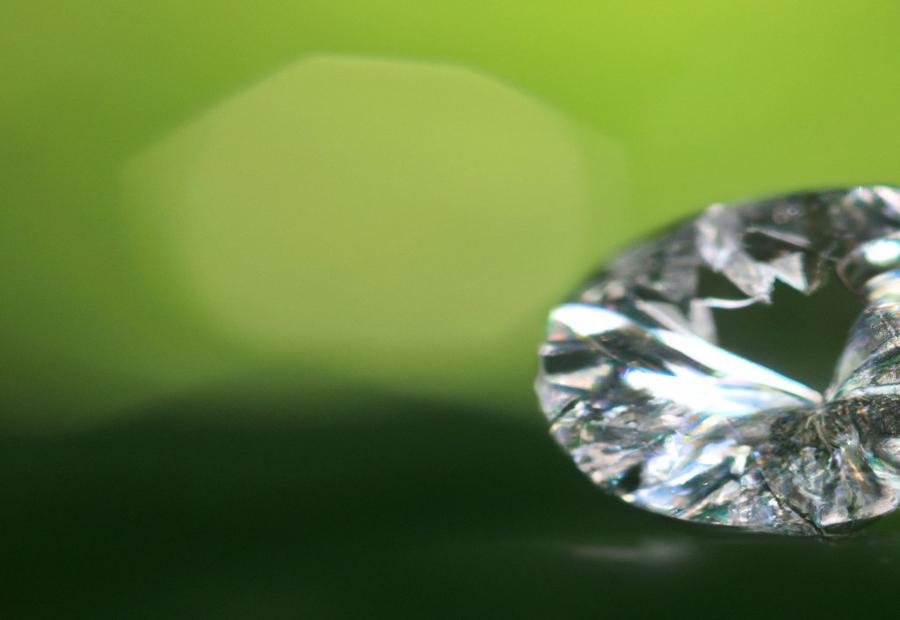
Photo Credits: Www.Lab-Grown-Diamond-Earrings.Com by Jordan Hall
Lab-grown diamonds are an eco-friendly option to mined diamonds. They are made in labs with advanced technology, meaning destructive mining practices are not used. They have a much lower carbon footprint and use less energy and produce fewer greenhouse gases when made. Plus, they do not lead to deforestation, habitat destruction, or water pollution.
These diamonds also address ethical concerns. Natural diamond mining often involves child and forced labor, which lab-grown diamonds do not. Furthermore, consumers can trace the diamond’s origin and production process.
The International Grown Diamond Association (IGDA) reported that lab-grown diamonds require up to 99% less land than mined diamonds. This supports the fact that lab-grown diamonds are indeed eco-friendly.
By choosing lab-grown diamonds, consumers can help sustainable practices and reduce their environmental impact. They will also not contribute to unethical practices in the diamond industry.
Some Facts About “Are Lab Grown Diamonds Eco-Friendly?”:
- ✅ Lab-grown diamonds have a significantly lower carbon footprint than mined diamonds, emitting only 6 pounds of carbon per carat compared to over 125 pounds for mined diamonds. (Source: Team Research)
- ✅ Lab-grown diamonds use significantly less water, with mined diamonds consuming over 126 gallons per carat compared to just 18 gallons for lab-grown diamonds. (Source: Team Research)
- ✅ Lab-grown diamonds disrupt only 0.07 square feet of land per carat, while mined diamonds disturb nearly 100 square feet of land per carat. (Source: Team Research)
- ✅ Lab-grown diamonds create only 1 pound of mineral waste, whereas mined diamonds generate over 5,798 pounds of mineral waste per carat. (Source: Team Research)
- ✅ Lab-grown diamonds are created using electricity, primarily from renewable sources, whereas mining diamonds requires heavy machinery and energy-intensive processes. (Source: Team Research)
FAQs about Are Lab Grown Diamonds Eco-Friendly?
Are lab-grown diamonds eco-friendly?
Lab-grown diamonds are considered a more environmentally friendly option compared to naturally mined diamonds. They are created in a lab using a process called chemical vapor deposition, which mimics the natural heat and pressure of the earth but in a much shorter timeframe. Lab-grown diamonds have a negligible impact on the environment, reduced waste, and regulated waste disposal. They do not cause air or water pollution and have significantly lower carbon emissions compared to mined diamonds.
What is the difference between lab-grown diamonds and mined diamonds in terms of environmental impact?
Mined diamonds require deep mining techniques that can cause damage to the environment, including air pollution, water pollution, land disruption, and habitat destruction. Lab-grown diamonds, on the other hand, are created in a controlled laboratory setting and have a much smaller environmental footprint. They use significantly less water, energy, and produce less waste compared to mined diamonds.
Can lab-grown diamonds be considered a sustainable choice for engagement rings?
Yes, lab-grown diamonds can be considered a sustainable choice for engagement rings. They have lower water usage, energy consumption, carbon emissions, land disruption, and waste creation compared to mined diamonds. By choosing lab-grown diamonds, individuals can enjoy beautiful, ethical jewelry while helping to protect the environment.
Do lab-grown diamonds have any advantages over mined diamonds in terms of sustainability?
Lab-grown diamonds have several advantages over mined diamonds in terms of sustainability. They require less water, energy, and produce fewer carbon emissions. Lab-grown diamonds also do not contribute to air or water pollution and have a much smaller impact on land disruption and waste creation.
Are lab-grown diamonds more affordable and accessible compared to mined diamonds?
Yes, lab-grown diamonds are generally more affordable and accessible compared to mined diamonds. They can be manufactured in a lab in a matter of weeks, while mined diamonds take billions of years to form and require extensive mining and processing. Lab-grown diamonds offer a responsible and cost-effective choice for consumers who want to enjoy the beauty of diamonds without the environmental and ethical concerns associated with mined diamonds.
How can consumers ensure that the lab-grown diamonds they purchase are sustainable?
To ensure that the lab-grown diamonds are sustainable, consumers should research and choose a reputable jeweler that can provide transparency about the origin and production of their diamonds. Look for a company that can document the sources of their stones and is making efforts to reduce their carbon footprint. It is also important to ask questions about the production process and whether renewable energy sources are used.


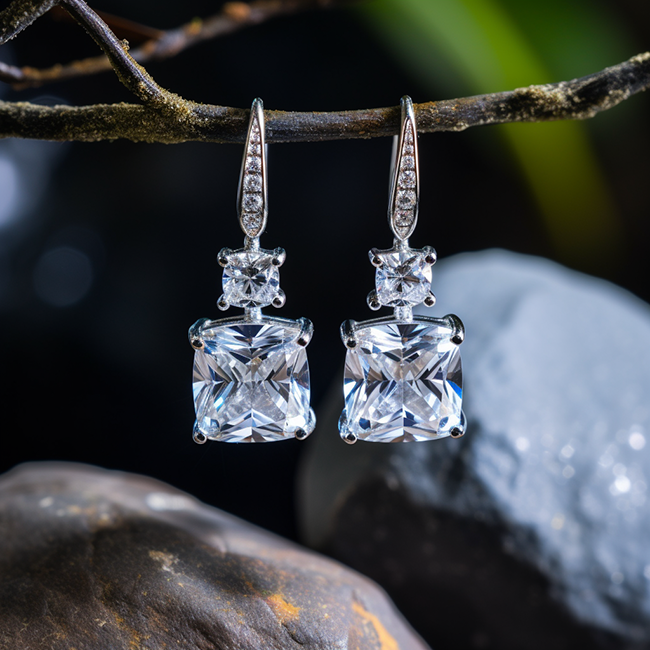
Leave a Reply